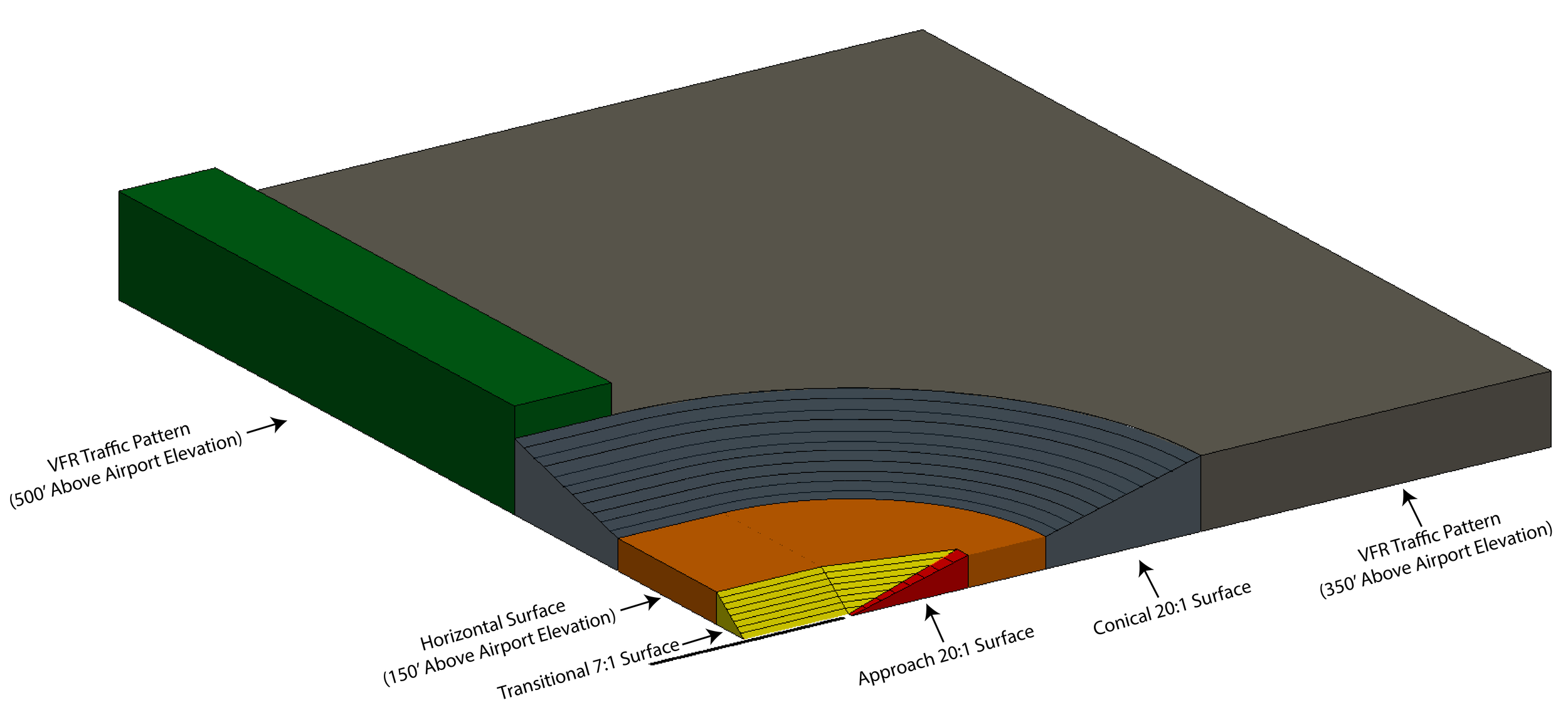
Received an FAA Notice of Preliminary Findings?
No Need to Panic!
We Are Here To Help
Receiving an FAA Notice of Preliminary Findings does not mean your project is doomed.
A Notice of Preliminary Findings can be issued for various reasons, and it doesn't necessarily indicate that your proposed structure will pose a problem. It's essential to review the specifics of the NPF and address any concerns raised to keep your project on track.
FAA Notice of Preliminary Findings
The most common reason to receive a Notice of Preliminary Findings from the FAA is that your proposed structure exceeds Part 77 - Title 14 Code of Federal Regulations (CFR) Part 77, Safe, Efficient Use and Preservation of the Navigable Airspace.
The FAA Notice of Preliminary Findings may list these surfaces as:
OBSTRUCTION STANDARDS EXCEEDED
Section 77.17(a)(2) - A height that is 200 feet AGL…
Section 77.19(a) - A horizontal plane 150 feet above…
Section 77.19(b) - A surface extending outward and upward…
Section 77.19(c) - Primary surface…
Section 77.19(d) - A surface longitudinally centered on the extended…
Section 77.19(e) - These surfaces extend outward and upward…
If a part or entire proposed structure exceeds any of the surfaces mentioned above, your project is not doomed. Please contact us with your FAA Aeronautical Study Number (ASN), and we will review your case(s) to determine the right path forward.
FAA Notice of Preliminary Findings may also list other potential impacts on Airport Runway Procedures such as:
6-3-8, Evaluating Effect on VFR Operations.
(a) Traffic Pattern Airspace dimensions. (See FIG 6-3-9)
(b) Within Traffic Pattern Airspace - A structure that exceeds a 14 CFR, part 77 obstruction standard and that exceeds any of the following heights is considered to have an adverse effect and would have a substantial adverse effect if a significant volume of VFR aeronautical operations are affected except as noted in paragraph 6-3-8 d.1.(f) and (g).
(c) The height of the transition surface (other than abeam the runway), the approach slope (up to the height of the horizontal surface), the horizontal surface, and the conical surface (as applied to visual approach runways,
Section 77.19).
(d) Beyond the lateral limits of the conical surface and in the climb/descent area - 350 feet above airport elevation or the height of 14 CFR Section 77.17(a)(2), whichever is greater not to exceed 499 feet above ground level (AGL). The climb/descent area begins abeam the runway threshold being used and is the area where the pilot is either descending to land on the runway or climbing to pattern altitude after departure. (The area extending outward from a line perpendicular to the runway at the threshold, see FIG 6-3-11).
The most critical impacts involve approach and departure procedures, which vary by runway at each airport. These protected airspace surfaces, known as Terminal Instrument Procedures (TERPS), are essential for maintaining safety and operational efficiency.
Impacting Terminal Instrument Procedures (TERPS) doesn't necessarily mean your project is at a standstill. At Williams Aviation Consultants, our FAA Airspace Experts conduct comprehensive reviews of each proposed or existing obstruction within the terminal instrument procedure’s Obstacle Clearance Surfaces (OCS) to assess whether a structure would significantly impact airport operations.
We evaluate how proposed structures could affect key elements such as Minimum Descent Altitude (MDA), Decision Altitude (DA), Circling Minima, and Departure Climb Gradients. Our assessments also consider critical factors, including survey accuracy (e.g., standards 1A or 2C), precise ground elevation, and latitude/longitude accuracy, ensuring a thorough analysis that addresses every potential impact.
Examples of TERPS impacts listed in a Notice of Preliminary Findings include:
Section 77.17(a)(3): A height within a terminal obstacle clearance area, including an initial approach segment, a departure area, and a circling approach area, which would result in the vertical distance between any point on the object and an established minimum instrument flight altitude within that area or segment to be less than the required obstacle clearance.
Obstacle penetrates RWY XX 40:1 departure surface by XX feet
TAKEOFF MINIMUMS AND (OBSTACLE) DEPARTURE PROCEDURES, TAKEOFF OBSTACLE NOTES
RNAV (GPS) RWY XX, increase LNAV/VNAV DA
RNAV (GPS) RWY XX, increase LPV DA
RNAV (GPS) RWY XX: Increases the LNAV
RNAV (GPS) RWY XX: Increases the LP
ILS OR LOC RWY XX: Increases the LOC XX
ILS OR LOC RWY XX: Increases the S-LOC XX
ILS OR LOC RWY XX: Increases the ILS DA XX
RNAV (RNP) RWY XX, increase RNP 0.30 DA by…
RNAV (RNP) RWY XX, increase RNP 0.11 DA by…
RNAV (RNP) M RWY 27 (SPECIAL), RNP 0.10 increase
RADAR MINIMUMS, increase ASR RWY XX MDA
The FAA Technical Operations Office objected to the proposal.





